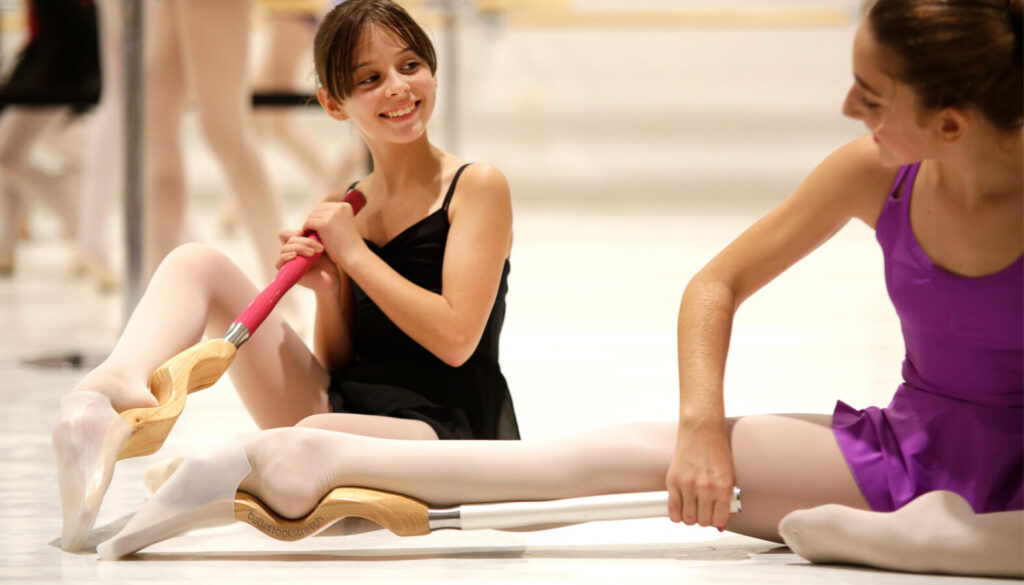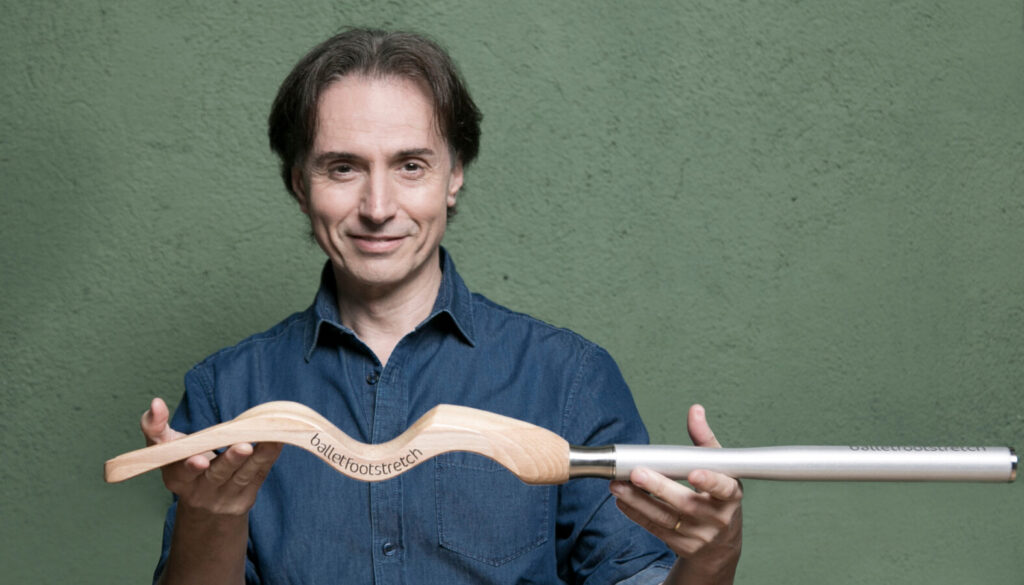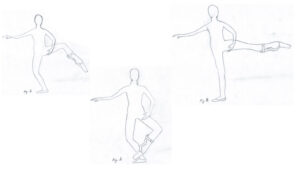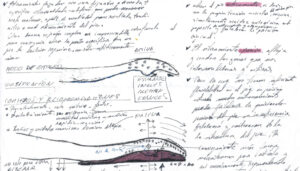Ballet Foot Stretch®, the original, was conceptuallized, created, and studied by David Campos (Spain) for two decades ago.
We must be realistic and accept that there are not enough resources and techniques to improve the arches of the feet of dancers. This particular quality is a great asset and requirement, especially if you want to be a professional dancer. Many who aspire to be professional don’t achieve their desire however because of not having enough beautifully-arched feet.
Desperation leads to the use of poor and incorrect methods, without control, incorrect positioning of the foot, and excessive load (for ex. ankles), methods that can eventually lead students to injury. It is not so difficult to recognize that a rigid foot does not improve its range of mobility or flexibility with just thousands of “tendus” or strengthening exercises, for ex. with Thera-band.
First you need to gradually increase the foot´s mobility and especially in a correct position in alignment with the leg, for which the Ballet Foot Stretch® can be a great help.
Ballet Foot Stretch® is NOT a passive stretching method. It provides an infinite possibility of exercises for the dancer, enhancing dynamic mobility as well as foot and leg line, while stretching the foot arch in different positions of the leg.
These are some questions that clarify the mechanics and functionality of the footstretcher.

• Is the astragalus-calcaneus bone joint a different issue than an Achilles tendon issue?
Yes, it is a different issue. When we explain the atragalus- calcaneus bone joint (ankle joint), this refers to the meeting point of bones ( astragalus “talus”, the calcaneous, and tibia). The Achilles tendón is located along the posterior part of this ankle joint, inserting only into the heel bone base, the calcaneus. The use of the Ballet Foot Stretch® as an external mechanical action pushes the stretch of the foot (plantar flexion), increasing pressure on this posterior ankle joint zone. In some cases, when this extra stretching (plantar flexion; or, in ballet terms, the pointe) action is applied, discomfort can be produced on this posterior ankle joint zone ( in medical terms, this condition is referred to as posterior impingement) and is mistakenly attributed only to Achilles tendón pain. As explained by Dr. Kevin Rose: The stress from repetitive plantar flexion by dancers, especially at a young age, is the suspected cause of the development of the os trigonum. Pain in posterior impingement occurs when the soft tissue of the ankle is pinched between the posterior lip of the tibia and the calcaneus. This occurs when the foot is inextreme plantar flexion such as during releve in the demipointe or en pointe positions…
Posterior impingement attributable to an os trigonum is usually misdiagnosed as Achilles’ tendonitis/tendonopathy, peroneal tendonitis or flexor hallucis longusstrain”(September 7, 2012/in Sports Injury /by Dr. Kevin Rose).
• Does Ballet Foot Stretch® device itself help to reduce overload ofthe astragalus-calcaneus bone abutment ( joint). If so, how?
Yes, the use of the Ballet Foot Stretch® can help toreduce overload of the posterior ankle joint area (the tibia, talus (astragalus) and calcaneous bones compressed) during plantar flexion, as compared to other foot stretching devices. Plantar flexion (pointing the foot), normally produces pressure on the posterior part of the ankle joint (tibia, astragalus-calcaneous). Upon using a footstretching tool, this pressure on the ankle joint is further increased. The difference of using the Ballet Foot Stretch® tool is that it was designed in such a way with a second highly- arched upward curve located just behind the tool´s heel base that supports thisankle joint during stretching.
How does this work?
The Ballet Foot Stretch® design is with 2 supporting curves: the first upward curve which supports the arch of the foot; and, the second upward curve just behind the heel cup base, which supports the posterior part of the heel joint (astragalus-calcaneus-tibia) during stretching. Upon placing the foot on the device and carefully stretching the leg and pressing the frontpart of the foot downwardswith the elastic band, a double upwardcounterforce with the 2 high-arched supporting curves is produced. In other words, stretching down the forefront of the foot, with the second curve, the heel pressure is relieved considerably, thanks to this curve´s supportive pushing action upwards and outwards, “holding” theastragalus-calcaneus joint, with a heel pushing forward action, similar to self-traction maneuver in physiotherapy.
The 2 high curves act as a “bridge support”for both foot arch and ankle, distributing pressure more evenly throughout the posterior part of the lower leg, reducing overload, and preventing posterior impingement (*), especially on the heel zone ( tibiaastragalus-calcaneus zone).
• Is the use of the pads required to alleviate overload of the astragalus-calcaneus bone abutment?
The pads have 3 functions: first, to adapt further to the different shapes of each particular foot and especially different foot sizes.
Second, to increase progressively the intensity of thrust when placed under the heel for further improvement of foot. And, third, to reduce heel pressure and add comfort when placed behind the heel or below the ankle as you stretch.
• Is the Ability to alleviate overload of the astragalus-calcaneus bone abutment patent related to the teaching That the device can help to rotate the hip joint outward (“en dehors”)?
An additional quality of the Ballet Foot Stretch®apart from reducing discomfort from the astragalus-calcaneus area is to ensure correct footposition (cou de pied endehors) enhancing line aesthetics and leg. When the heel isplaced to their respective base (right heel in left base and the left heel on the right base) we get an aesthetic turn of the foot with the heel slightly outward. This position feature we call “the cou de pied” Furthermore, the Ballet Foot Stretch, apart from being highly efficient and safe as the foot and the ankle are stretched, has its original design with a characteristic elongated handle. This elongated handle(patented design) is special because it offers theuser a variety of possible hand maneuvers for diverse leg positionings, helping the function of stretching, and strengthening, the entire leg in different ballet positions, more especially on the “endehors” (outward rotation from the ankle, to the knee and up to the hip) lengthening and beautifiying the leglines, a basic requirement in classical ballet training.
I feel deeply satisfied and honored to have helped with my invention of the Ballet Foot Stretch®, all these dancers, teachers, and gymnasts who are open and seek new alternatives, who feel responsible to achieve their personal goals, and who choose to progress in the best conditions for a better future.

David Campos
Barcelona, Spain.
Former soloist of the Royal Ballet of Flanders.
Founder and ballet teacher of the David Campos Ballet School, Barcelona. Gold medal of Prix de Lausanne (2008) from his student Aleix Martinez.
Director and choreographer of the David Campos Ballet, Barcelona.
Guest choreographer at Bolshoi Ballet Akademy, (Moscow), Israel, University of Michigan, Ballet Philippines.
Inventor of Ballet Foot Stretch® patented in the United States.





